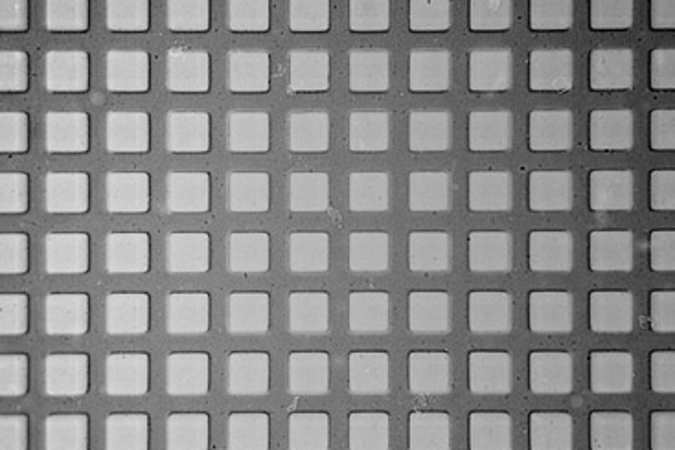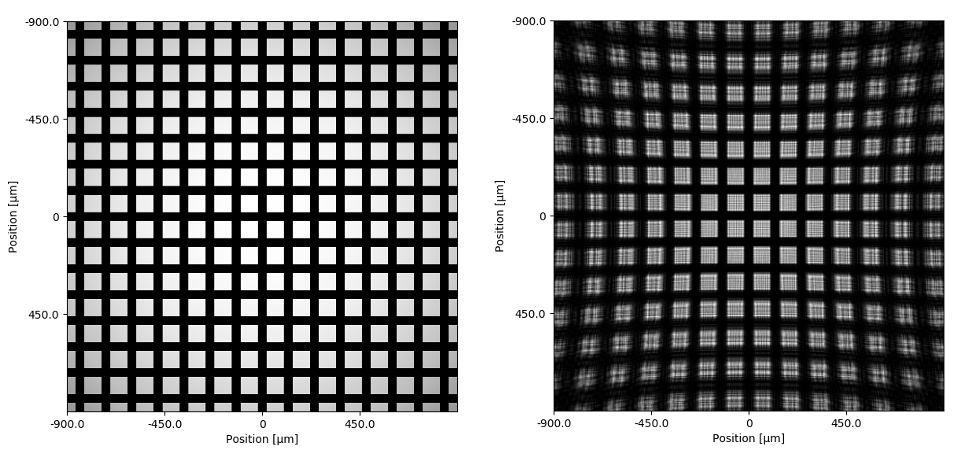
Figure 1 shows a nickel mesh with a period of 12.7 μm that is imaged at 12 keV by 91 beryllium 2D lenses with R = 0.2 mm with a magnification factor of 10 onto a high resolution film; cf. the section on imaging & diffraction and Lengeler et al. (2005): Refractive x-ray lenses. It is obvious that the image is practically free from aberrations.
Figure 2 shows a computer simulation of the imaging of a similar mesh with a period of 12 µm at 12 keV by 91 beryllium 2D lenses with R = 0.2 mm with a magnification factor of 10. On the left hand side we have the image in the detector plane produced by parabolic lenses, while the right hand side shows the result of spherical lenses. Note that spherical lenses are inappropriate for imaging with x-rays. Furthermore, for spherical lenses the geometric aperture is strictly limited by 2R. Hence, in the computer simulation we assumed a geometric aperture of 350 µm for the spherical lenses and of 880 µm for the parabolic lenses.

